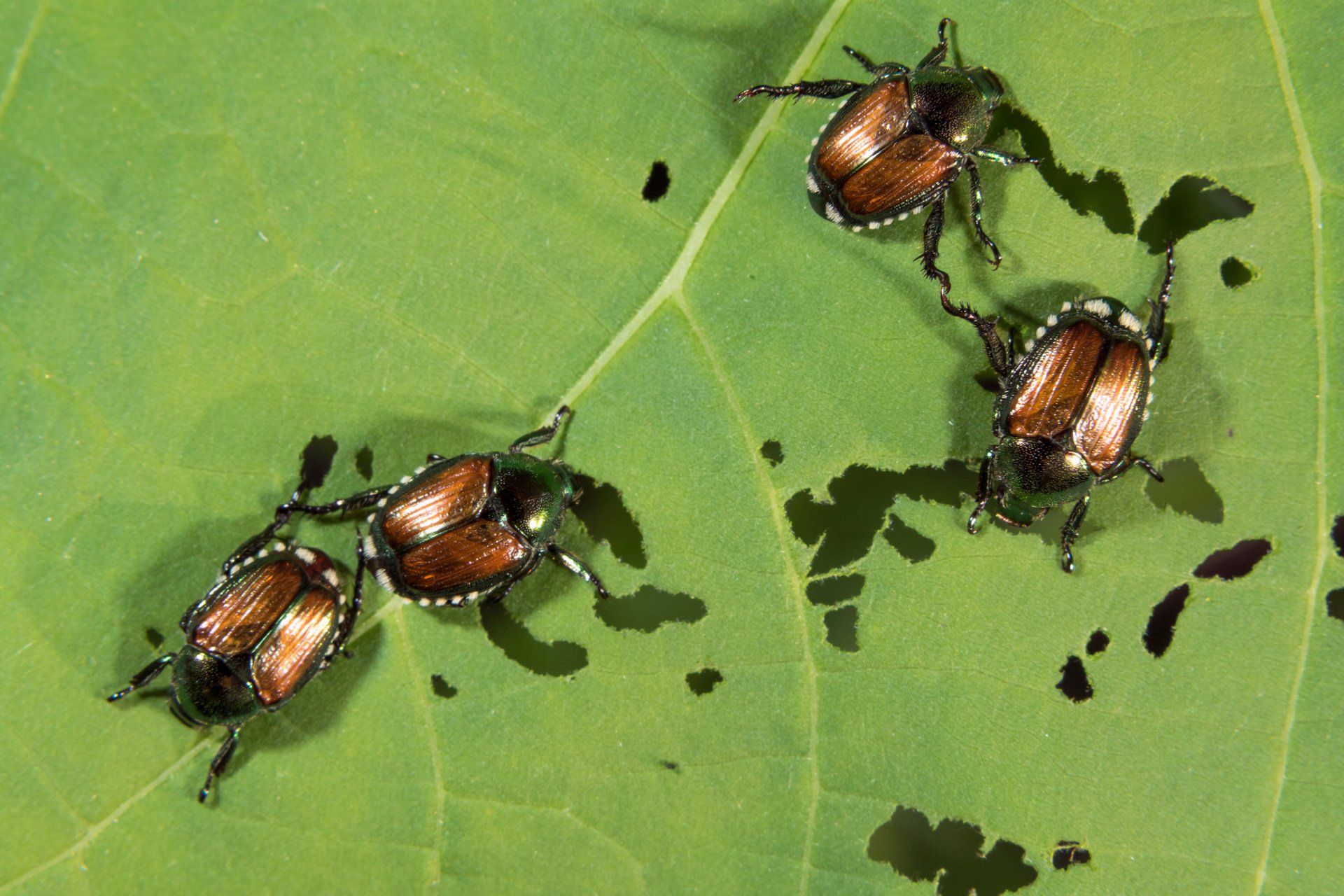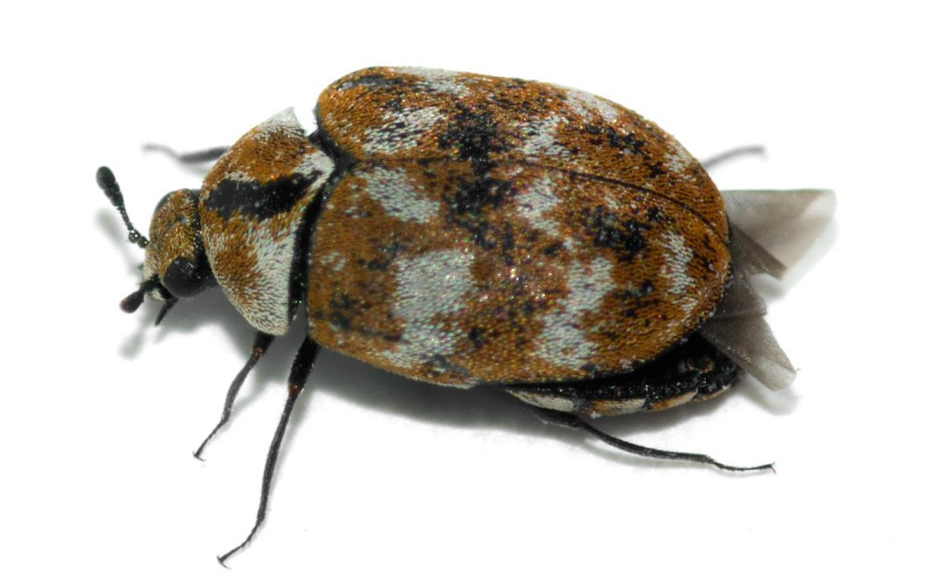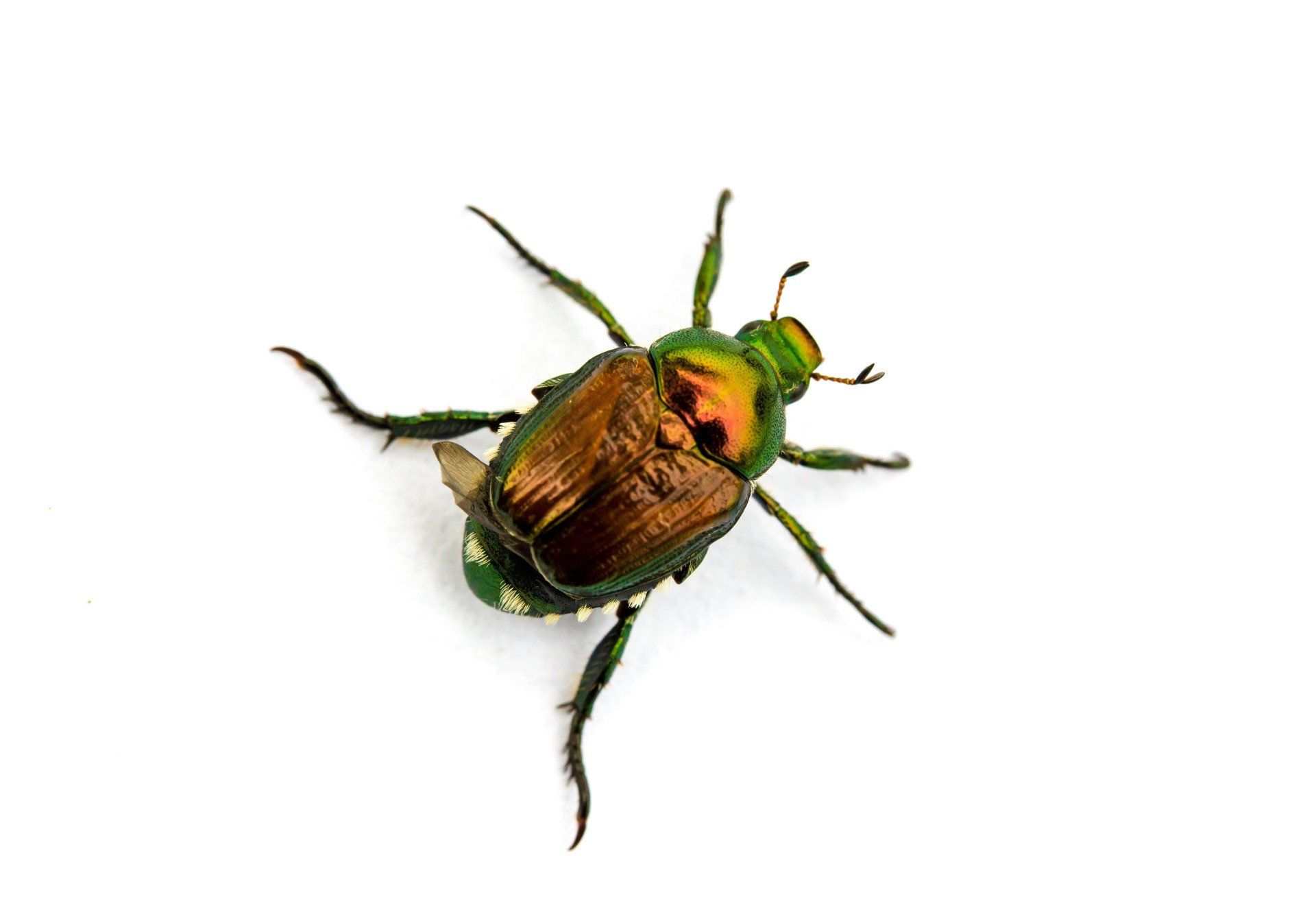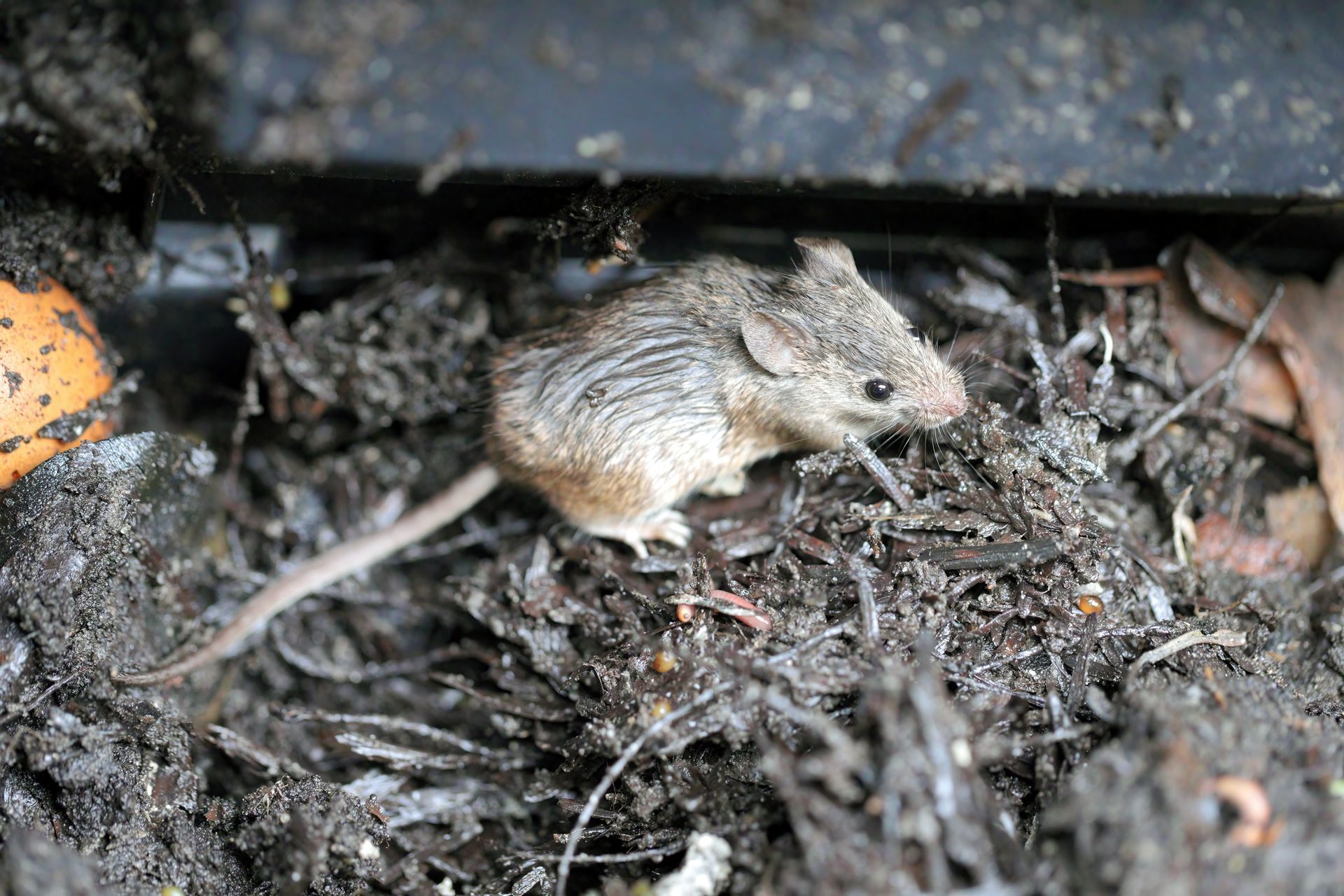How To Get Rid Of Beetles

Beetles are part of a category of insect that includes several thousand different species. Several species are common household bugs which can cause all kinds of damages including destruction of crops and gardens, consumptions of fabrics and linens, and contamination of grains and other pantry items. These bugs are generally active in the evenings and are attracted to light sources. This means that an open window or door can let a beetle inside where they can start to infest a residential or commercial property. Getting rid of beetles after an infestation starts can be complicated and requires an understanding of where to find problematic areas and how to treat against them.
Identification is the First Step to Getting Rid of Beetles
Before treatment can begin, the type of bug and any problematic areas need to be identified. Treating for the wrong bug or the wrong type of beetle could be a waste of time, money, and effort. Beetles are identified as insects that have six legs, a protective exoskeleton, wings, antennae, and range in size depending on species. To identify the type of beetle, it helps to identify key features of the beetle. Note the shape of the body, the color of the wings, the size, and any other features that stand out. Also look for signs of beetle activity like larvae and molted skins.
Where to Find Beetles
Finding where beetles are active may also shed some light on the type of beetle you are trying to get rid of. Beetles that are found outside feeding on a garden may be Japanese beetles while beetles found in an old box of cereal might be pantry beetles. Be sure to inspect your home and yards in places like carpets, closets, furniture, storage spaces, attics, basements, pantries, dressers, and gardens. It would help to hire a professional help to provide a thorough inspection of your property. They have the experience needed to identify the species of beetle and create a custom treatment plant.
How Do Professionals Get Rid of Beetles?
Professional pest control is always recommended when dealing with large scale infestations of any kind. This is because pest control experts often have effective strategies to get rid of beetles that are tried and true. Most professional pest control experts will require an inspection, treatment, follow-up, exclusion, and education.
- Inspection: Before a custom beetle treatment plan can be created, a beetle control expert will need to know what areas are infested and what kind of beetle needs treatment. Once these elements are discovered, professionals can determine how to treat the beetle problem effectively.
- Treatment: Locating problematic areas will help expedite beetle treatment. Treatment will include interior and exterior pesticide applications and leaving baits and traps behind to monitor progress. Once treatments have been applied, it will take some time for beetles to become infected by poison and die off.
- Follow up: Treatments take time and the only way to check for progress is to see how effective the beetle control strategies have been. A follow up visit may be needed to check beetle traps to see if beetles are still active.
- Exclusion: Ensuring that beetles are unable to access a home after treatment is successful is just as important as treatment. Ensuring that any access points for beetles to gain entry into a home are closed off will stop beetles from returning and reinfesting.
- Education: After the beetle problem has been addressed, educating homeowners on how to minimize the things that attract beetles can help prevent future beetle activity.
How to Get Rid of Beetles Inside Your Home
There are several beetle species that will end up inside your home and infesting. The most common species are carpet beetles who feed on fibers found in fabrics, carpets, and linens and pantry beetles who feed on dried grains typically found in pantries.
Getting rid of Carpet Beetles

Getting rid of carpet beetles can be done using a combination of different strategies:
- Dusting: Applying diatomaceous earth or borax directly to carpets and rugs can effectively treat for adult carpet beetles. Be sure to use a mask to avoid any respiratory problems that might occur from breathing in these powders.
- Vacuuming: Thoroughly vacuuming carpeting and rugs will help remove carpet beetles, their eggs, and any excess food like pet hairs they might be feeding on.
- Dry fabrics: Small items like clothing, bedding, or towels can all be put into the dryer to help kill off any beetles or eggs. The dryer should raise temperatures higher than the beetles heat threshold to ensure that all beetles and eggs are killed off.
- Removing food sources: Carpet beetles feed on all fabrics and not just carpets. Once items are dried, storing loose clothing, bedding, linens, or towels in airtight vacuum sealed bags will help prevent carpet beetles from being able to access those items.
- Mothballs: These items contain naphthalene and paradichlorobenzene which are effective at deterring carpet beetles. Use these items in closets and storage areas where carpet beetles may thrive.
- Pesticide applications: Beetles can be effectively treated using a combination of different pesticides. Use pesticides that include cyfluthrin, bifenthrin, deltamethrin, permethrin, or tetramethrin.
Getting rid of Pantry Beetles
Getting rid of pantry beetles can be a little more difficult because these beetles infest food in areas where food is stored. There are also several species of pantry beetles that include cigarette beetles, red flour beetles, and sawtooth grain beetles. These beetles can be treated using the following strategies:
- Eliminating contaminated food: The first step in treating for pantry beetles is to throw all items that could potentially be infested. This usually includes all grains, cereals, rice, pastas, flours, breads, nuts, dried fruit, dry pet foods, and coffee beans. Keeping even one item with pantry beetle eggs will ensure that all treatment strategies are futile.
- Vacuum: Vacuuming out the pantry from top to bottom to ensure there are no leftover crumbs or spills will ensure that pantry beetles have no food to sustain their infestation.
- Apply soap and vinegar: After the pantry has been vacuumed, it is time to clean the surfaces down with soap and then spray down with vinegar. Vinegar is an effective beetle deterrent that helps keep beetles away.
- Pesticide applications: Using a residual pesticide spray to treat the infested areas is another effective way to ensure that beetle populations are kept under control. The residual pesticide will last for a while and infect any beetles that come into contact with the poison.
- Seal new food properly: All new food will need to be sealed in airtight hard plastic or glass containers. Thin plastic bags that are sealed can be reinfested because pantry beetles can chew through the thin plastic to get to the food.
- Pheromone traps: These traps are an effective method of monitoring how effective cleaning and treatment is. The traps use pheromones to attract beetles looking to mate which then get stuck on the sticky pad.
How to Get Rid of Beetles In Your Garden and Outside
There are several species of beetles that thrive outdoors. Some are beneficial like ladybugs while other are more problematic. One of the most common types of beetles that regularly devastates gardens is the Japanese beetle.
Getting Rid of Japanese Beetles

Japanese beetles can quickly overwhelm a garden, leaving all of the leaves chewed through and barren. This can destroy a crop as many of the plants can no longer photosynthesize. To reduce the impact of Japanese beetles, gardeners can implement the following strategies:
- Soap and water: Use a mix of dish soap or insecticidal soap and water to spray down plants. These beetles are large enough that they can be hand picked off the plants or knocked into the soapy water where they will drown.
- Neem oil: The bug repellent oil is all organic and can be used on most garden variety plants. It acts as a deterrent but also has growth regulating capabilities that stop beetle larvae from developing.
- Beetle traps: These traps use pheromones to attract Japanese beetles that are ready to mate. These traps are very effective at attracting beetles, so it is important to set theses traps away from your garden so as not to make the problem worse.
- Parasitic nematodes & milky spore: Nematodes can be applied to the soil in a garden bed and lawns to help control Japanese beetle grubs. These nematodes infect the grubs causing them to die off and not develop into mature beetles. Milky spore is another treatment that can be applied to soil to infect developing and mature Japanese beetles.
- Insecticides: This strategy may not be the best for consumable garden plants, but it would work well on flowers and other outdoor plants. These pesticides would infect the beetles causing them to die off once they are infected.
- Predators: By introducing bird baths and feeders, you can increase the presences of predatory birds that feed on the beetles. This natural deterrent will help control beetle populations.
How to Get Rid of Beetles Naturally
If someone does not want to resort to using pesticides, there are several natural ways to help get rid of beetles naturally.
Essential Oils: Beetles will stay away from certain plants like mint and lavender. Using essential oils derived from these plants has shown to be an effective way at keeping beetles away. Mix a few drops of these oils with some water and spray it around doorways, windows, vents, and inside closets and dressers to deter beetles.
Neem Oil: Neem oil is a natural essential oil that can be extracted from the neem plant. It acts as a natural bug repellent for all types of insects including beetles. Mix neem oil with water to create a potent bug repellant and spray it around access points and places with items beetles can feed on.
Beetle Traps: Sticky traps can be bought that are designed to attract beetles using specific scents that they are attracted to. These can be used effectively inside and outside where signs of beetle activity are found.
Pyrethrin: Organic pesticide sprays with pyrethrin are an extremely effective pest control method used to treat for several types of insects. Pyrethrin is extracted from chrysanthemum flowers, and it effects the nervous systems of the insects it works on.
Diatomaceous Earth: Diatomaceous earth is a fine sand like powder that acts as a desiccant when it touches insects. It is safe for humans and pets but is deadly for insects. This powder can be used to create a line surrounding a property so beetles and other bugs can’t access the inside.
Milky Spore: Milky spore is a fungal growth can be applied to soil that contains beetle grubs. The spores are consumed by the grubs which become infected and eventually die. When this happens the decomposing grubs will release more milky spore out into the soil to continue defending against other grubs.
Habitat Modifications: There are certain plants that outdoor beetles avoid so planting these around your property might help reduce the likelihood of certain beetle infestations. Red maples, boxwoods, dogwoods, holly, and pine are all trees that deter beetle activity. Coral bells, chrysanthemums, forget me nots, germaniums, hostas, and impatiens are all flowers that beetles do not like.
Borax: Borax or boric acid can be found in most grocery and hardware stores. It if an effective poison that is deadly for bugs but safe for human and pet contact as long as there isn’t prolonged exposure to large amounts of it. Sprinkle the powder liberally where there have been signs of beetle activity and the beetles that touch it will be poisoned.
How to Prevent Beetles
Getting rid of beetles can be a nightmare with the different treatment strategies that need to be implemented to effectively kill off beetle populations. Each species requires a different strategy and preventing beetles altogether is generally the best way to keep beetle populations under control.
- Exclusion: This requires that all access points that beetles can use to access their food sources are sealed off. For indoor beetles this means sealing up gaps in windows, cracks in foundations, and anywhere else a beetle may find their way inside. It also helps to trim back bushes and trees away from the outside of a home to prevent bridges that give beetles access.
- Exterior pesticide application: Laying down an exterior application around the perimeter of a home is another good way to prevent beetle access. The residual pesticide application will infect any beetle that tries to cross the barrier causing it to die off later.
- Eliminating food sources: This includes sealing off linens and clothes in airtight vacuum sealed containers, keeping food in pantries sealed in hard plastic airtight containers, and covering garden plants using row covers. By reducing the food availability for beetles, their populations won’t be able to thrive.
- Treat for grubs: Most beetles develop as grubs underground so introducing beneficial nematodes, milky spore, and other soil treatments will help prevent grubs from developing into adult beetles.
Contact Professionals to Help Get Rid of Beetles
If all attempts to get rid of beetles have failed, it may be time to call EcoGuard Pest Management. Our team of licensed and experienced pest control experts will come inspect your property to identify problematic areas and determine the species of beetle causing problems. Once we have this information, we can create a customized plan designed to effectively treat your beetle problem. Call today to schedule an inspection!

















